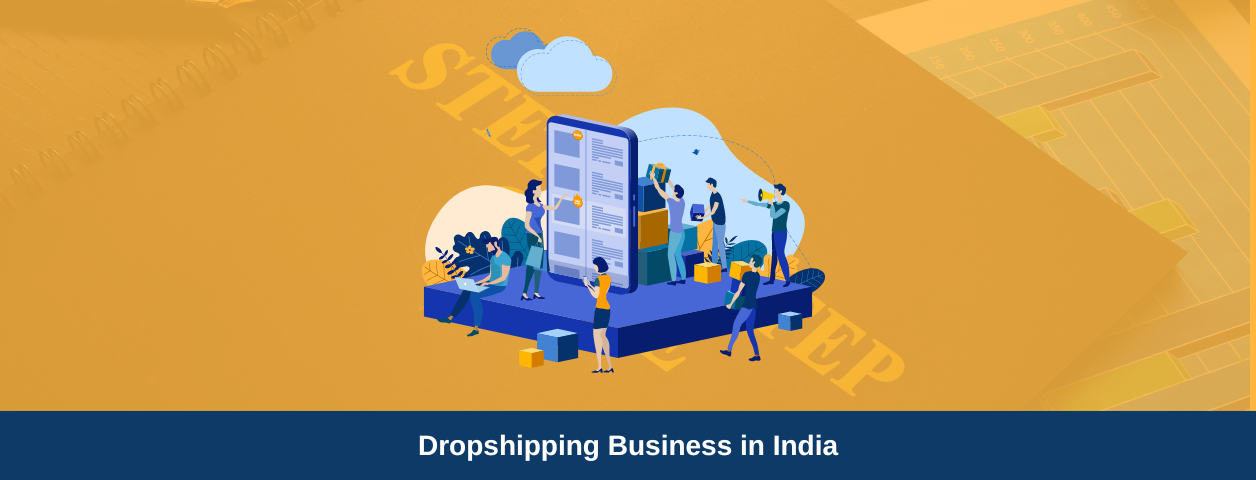Are you interested in starting an online business and getting confused when choosing between Amazon and Shopify? Choosing between the two dominant platforms can be confusing for new entrepreneurs. It is also essential for companies to choose the best platforms for selling products online.
In this blog guide, we explore Shopify vs Amazon, discuss their pros and cons, and compare pricing to help you choose which platform is best for your business.
What is Shopify?
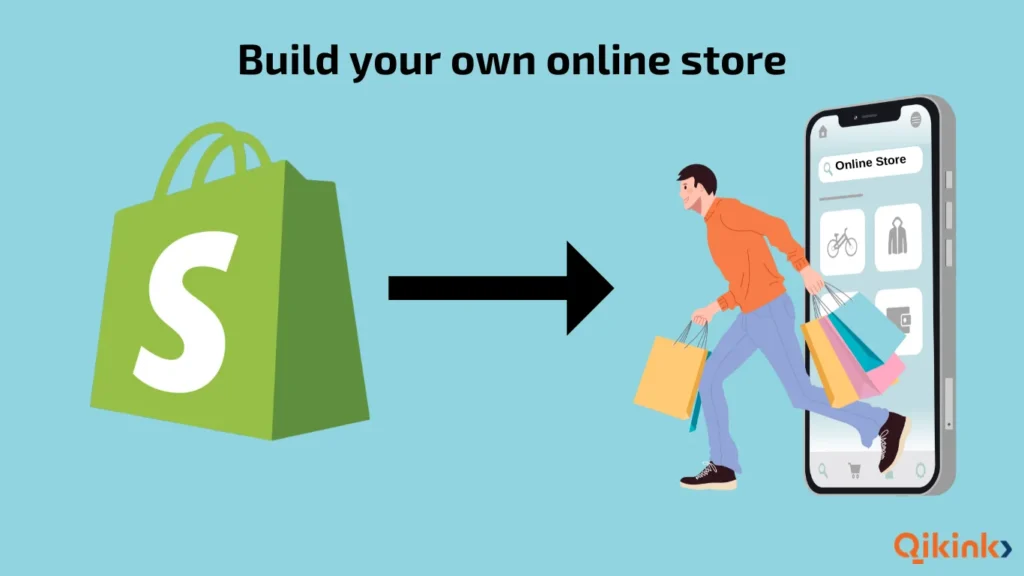
Shopify is a complete e-commerce platform that gives you more control to start, manage, and grow your business. Businesses can use Shopify to build an online store, manage sales, market products, and handle payments.
Shopify also offers built-in customizable themes for creating an online store, as well as AI features and messaging tools for customer support.
Shopify pros and cons
Pros of Shopify
1. Complete brand control
Merchants can easily set up and manage their own online stores. Businesses can also utilize marketing tools to grow.
2. Customer service
Shopify provides excellent customer support for running your online store. Shopify experts are available 24/7 with Shopify. Also, businesses can easily access helpful documents and video tutorials in the Shopify store.
3. Integration options
Shopify integrates with a wide range of platforms and external tools, such as SEO marketing tools, Analytics tools, dropshipping, payment gateways, shipping service providers, and more. This helps seamlessly integrate these tools into your online store to improve its functionality.
4. Safe and Reliable
Security is important for protecting customers’ and companies’ information. Shopify offers an SSL (Secure Socket Layer) protection certificate for encrypting your store data, such as reliable payment information and financial information.
5. Shopify SEO and marketing
Marketing is essential for selling products online. Shopify offers numerous marketing tools, such as social media, Email marketing, and Google Ads. It also provides ready-to-use marketing tools and customizable templates for promoting products online.
6. Customizable & Responsive themes
Shopify themes are designed to be responsive, which looks good on both desktops and phones. Because it is essential, many people use mobile phones for online shopping. Shopify provides comprehensive collections of customizable themes.
Shopify supports numerous payment gateways. It integrates with almost 100 other payment providers in the world.
Cons of Shopify
1. Transaction fees
If you use third-party payment gateways instead of Shopify payments, you will be charged transaction fees for each sale, which will impact your profit margins.
2. Dependency on Apps
If you need to add specific functionality to your store, you need to rely on third-party app integrations, which increases costs.
3. Fulfillment
Shopify doesn’t handle the fulfillment process. Sellers are responsible for handling inventory and managing orders and shipping.
4. Limited blogging capabilities
Shopify’s built-in platforms provide limited blogging capabilities, which could be a drawback for online stores that prioritize content marketing.
Amazon
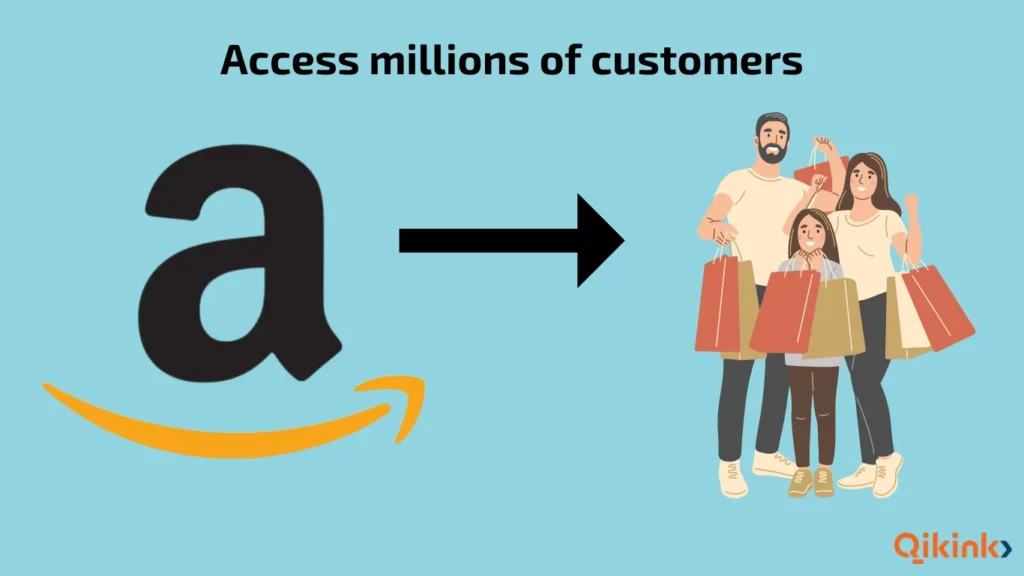
Amazon is the largest marketplace. It enables third-party sellers to sell their products online directly to Amazon customers. Amazon offers access to a vast customer base, a strong brand reputation, and fulfillment services for sellers.
Amazon pros and cons
Pros of Amazon
1. Large customer base
Amazon has millions of active users worldwide, and they actively search for new products every minute. Sellers can access millions of potential customers, which is beneficial for new businesses looking for brand visibility.
2. Fulfillment Service
Amazon provides fulfillment service(Amazon FBA), which takes care of everything from packing orders to shipping them directly to customers. This saves time and effort in order fulfillment.
3. Search Engine Optimization
If your product listings are correctly optimized, Amazon’s search algorithms can help your products reach potential customers worldwide.
4. Easy to start and manage
Amazon provides a user-friendly platform that is easy to navigate and manage. It makes it easy for entrepreneurs to start their online businesses.
5. Excellent customer service and support
Amazon provides excellent customer service and support, which can help build customer loyalty and increase sales.
6. Leverage Amazon’s advertising
Amazon offers a powerful advertising platform that can help online stores reach more customers and increase sales.
7. Strong brand reputation
Amazon is a trusted brand that customers know and trust. Due to its customer service and easy return options, customers are more willing to buy from this platform, which can help increase customer loyalty.
Cons of Amazon
1. High Competition
There can be a vast number of sellers offering the same products, so standing out from the competition is quite competitive and challenging. Unless you sell unique products and have a good marketing strategy, you can make sales online.
2. Higher Selling fees
Amazon charges many fees, including listing fees, referral fees, and shipping fees, which can reduce your profit margins.
3. Risk of account suspension
Amazon has a strict policy. If you violated their guidelines, your Amazon account was suspended or terminated for various reasons.
4. Limited branding opportunities
Amazon does not allow much customization of the storefront, which can limit the ability to build a unique brand.
Difference between Shopify and Amazon
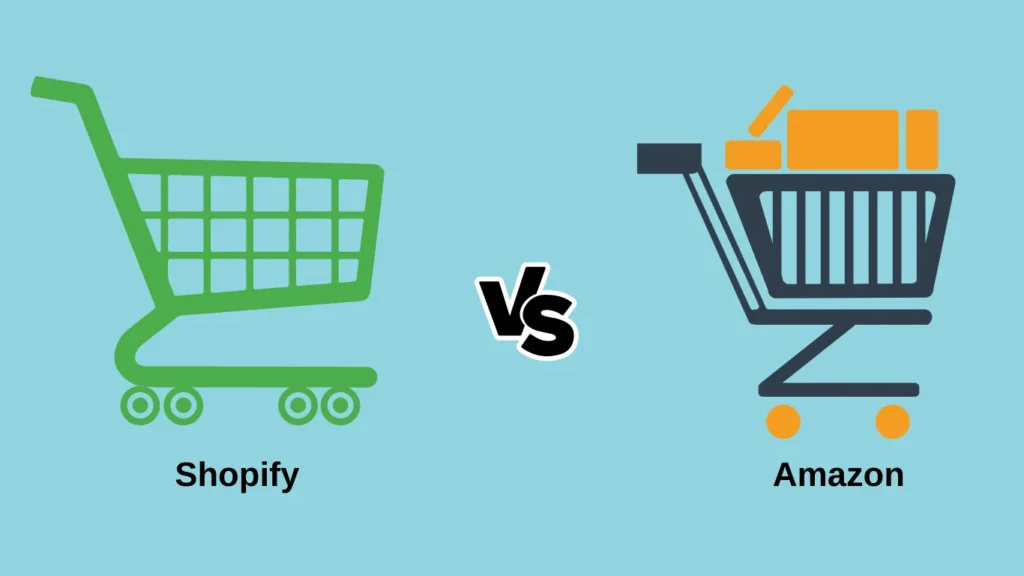
The critical difference between Shopify Vs Amazon is how to reach your potential customers. In Amazon, they have a built-in audience. All you do is list your products on their platform and get featured in search results.
On the other hand, Shopify doesn’t have built-in customers. You have to use marketing channels to drive customers to your website.
Shopify vs Amazon
S.No | Aspects | Shopify | Amazon |
1 | Business Model | Individual E-commerce Platform | Third-Party platform |
2 | Control | Sell under your own brand name. | You can sell under your brand name, but getting recognition is quite challenging. |
3 | Platform Fees | Start for free & First month Fees: ₹20 and Basic plan starts from ₹1,499 INR/month | Amazon charges referral fees starting at 2%, and it varies for each product sold based on categories. |
4 | Customization options | Shopify offers flexible customization options for building your online stores. | Sellers have to work with standard layout designs. |
5 | Audience Reach | Need to use marketing channels to reach customers. | In-built audience reach |
6 | Brand control | Complete control over branding | Limit the ability to create a unique brand. |
7 | Templates & Design | It offers customized themes and templates. | No control over store designs |
8 | Payment processing | Supports more than 100 payment gateways. | Amazon supports all types of payment processing, from credit cards and debit cards to COD. |
9 | Marketing tools | It provides in-built marketing tools to promote products. | It offers sponsored products and Ads to promote products. |
10 | Transaction Fees | It charges transaction fees if you use third-party payment gateways. | They charge referral fees and shipping fees. |
11 | Fulfillment | It doesn’t handle fulfillment. | It provides fulfillment services. |
12 | Dropshipping | It provides dropshipping services. | It provides dropshipping services. |
13 | Mobile Responsive | Yes | Yes |
14 | Profit margins | Higher Profit margins compared to Amazon FBA | Lower profit margins due to Amazon’s Fees. |
15 | Customer Support | Shopify support + Own customer service | It provides Excellent customer support. |

Is it better to sell on Amazon or Shopify?
Selling on Shopify vs Amazon depends on your business goals, target market, and product range you have. Both have their advantage and disadvantages.
Selling on Amazon best for?
If you’re looking for a convenient and efficient way to meet your business needs, consider using Amazon. To get started, you’ll need to create an Amazon Seller Central account, list your products, and begin selling.
Additionally, if you’re interested in reaching a broader audience and expanding your business globally, Amazon is a great option.
Selling on shopify best for?
If you want to build your own brand name and online store, you can go for Shopify. It offers complete control of store customization, branding services, and product listings.
Cost Comparison
Amazon Pricing:
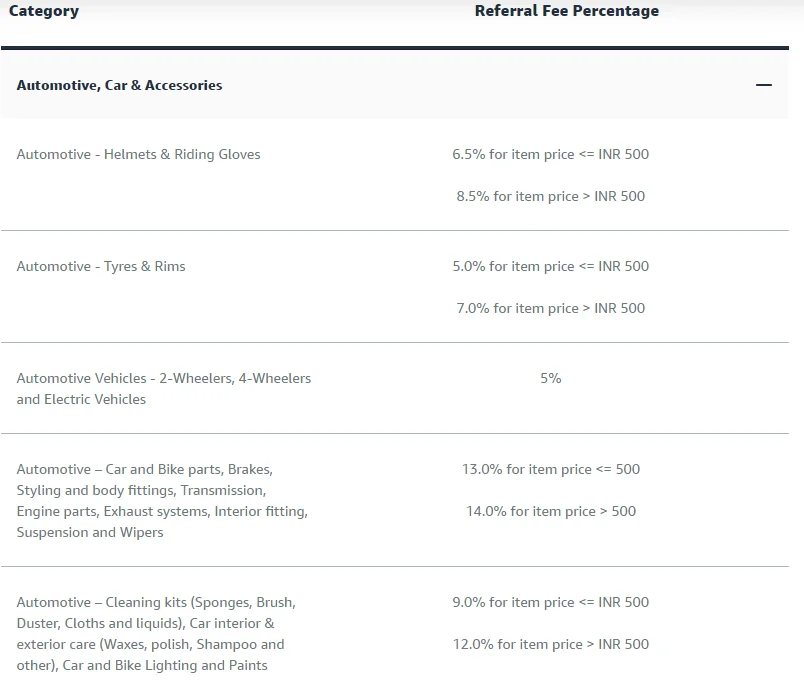
Source: Amazon
- Amazon charges a referral fee on each sale, which ranges from 2% to 45%, depending on the product category.
- Amazon also charges a fulfillment fee for orders it fulfills, including picking, packing, and shipping. The cost varies depending on the size and weight of the product.
Shopify Pricing:
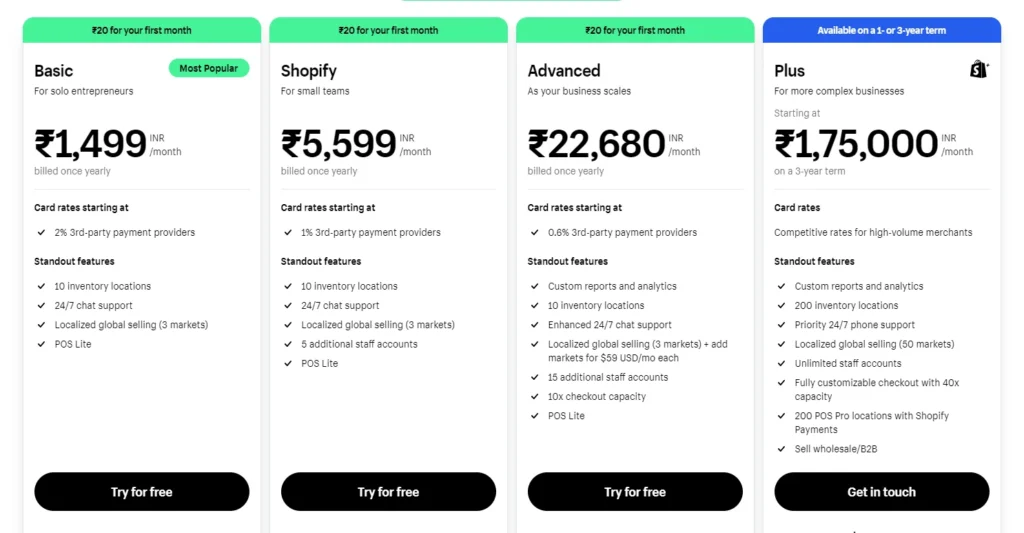
Source: Shopify
- Shopify charges ₹20 for your first month. Basic plans start from ₹1,499 INR/month.
- Shopify also charges a transaction fee on each sale, which ranges from 0.5% to 2%, depending on the plan.
- Shopify offers a variety of third-party apps and integrations that can add to the cost of running a store.
Ease of Use
Shopify:
- Shopify is designed to be user-friendly. Beginners can create their online store using in-built customizable themes.
- This platform also offers tools for adding products, marketing tools, and processing orders, simplifying the process of building an online store.
- They offer 24/7 customer service to assist with issues and ensure a smooth experience for Shopify users.
Amazon:
- Selling products on Amazon can be easier than setting up your own store. All you do is create a seller account. It’s a straightforward process. You can choose between an individual account or a professional account.
- Amazon provides guidelines for quick listing and selling products online.
- Amazon handles fulfilling your orders. All you do is send your inventory to the Amazon warehouse.
Integrations and Tools
Shopify Tools
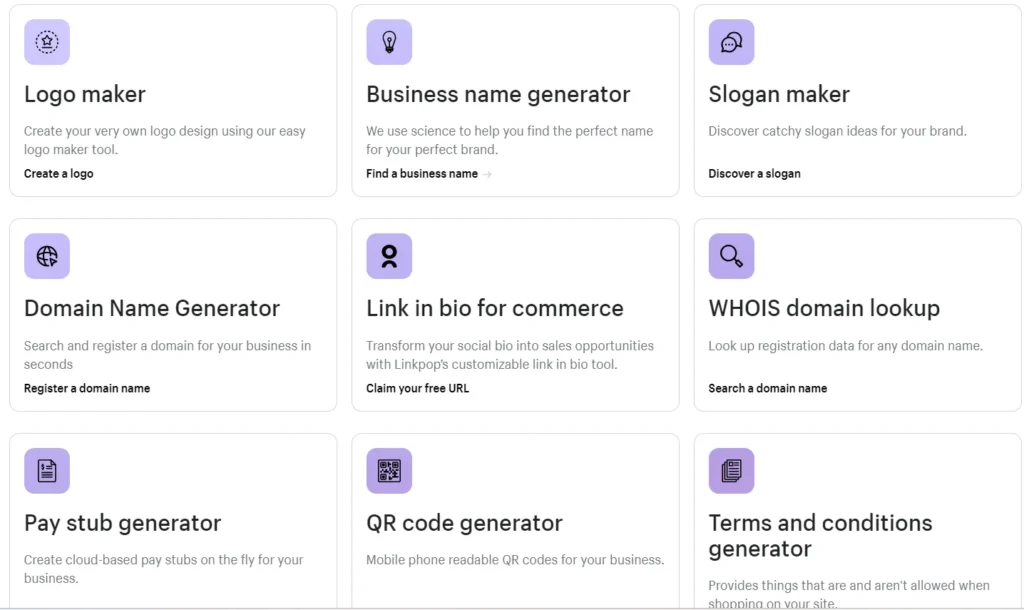
Source: Shopify
Shopify offers excellent free tools for growing your online business. Here are some tools to grow your retail business
- Logo Maker
- Business Name Generator
- Slogan maker
- Domain name generator
- QR code Generator
- Terms and conditions generator
- Business card maker
- Invoice generator
- Refund policy generator
- Image resizer and more.
Amazon Tools
Amazon provides access to a wide variety of tools and solutions that will increase your business sales. Here are some tools to help you grow your business.
Prime Advantages:

Source: Amazon
When you use Fulfillment by Amazon(FBA), you send the product to the fulfillment center, and they take care of the rest.
Benefits:
- Sellers with prime badges have gotten 3x higher sales.
- Free and Fast shipping for prime members.
- Amazon handles customer support and returns.
Advertise your products:

Source: Amazon
Amazon offers sponsored products(SP) that customers can easily find.
Benefits:
- Chances of getting on page 1 of Amazon search results
- Pay only when your ad is clicked
Attract customers with savings:
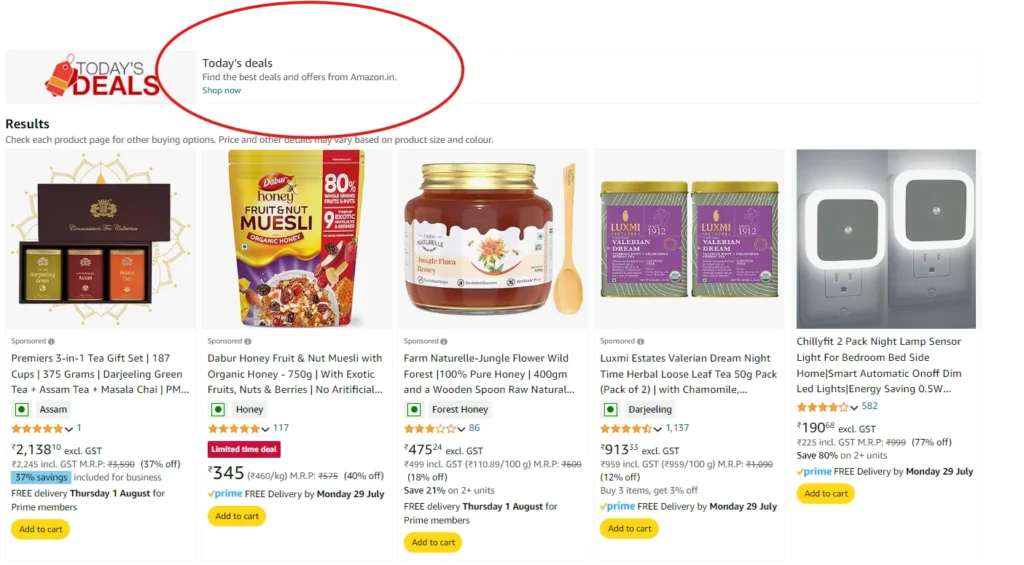
Amazon provides coupons and extraordinary deals and offers programs to boost your sales.
Shopify vs Amazon which platform is best for your online business in 2024 India?
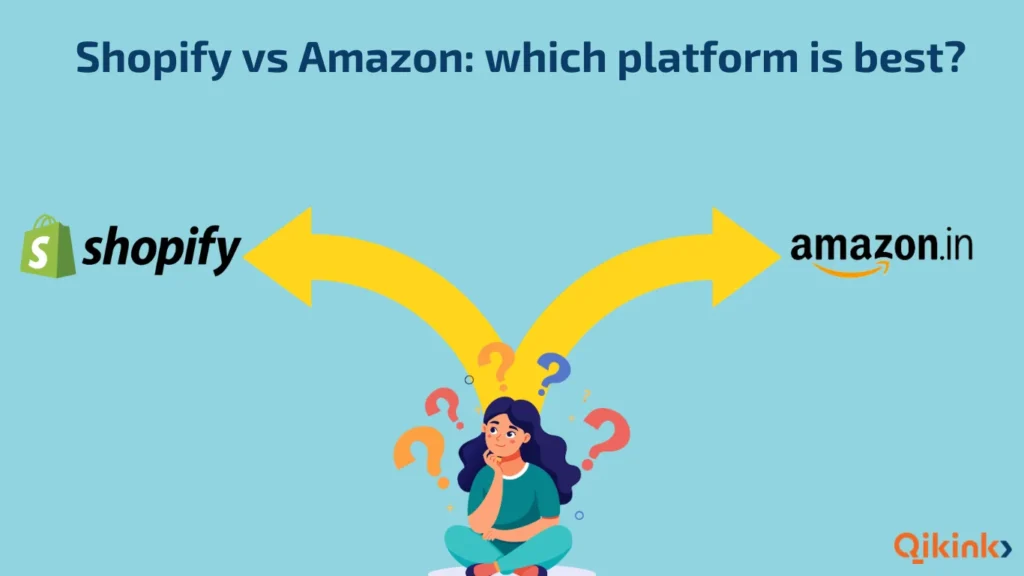
Choosing between Shopify Vs Amazon, it depends on your business requirements:
Shopify
- Shopify is best for creating a customizable online store with complete control over branding and customer experience.
- It is excellent for building a unique brand presence and direct customer relationships.
- However, to reach potential customers, businesses must make independent marketing efforts.
Amazon
- Amazon offers massive reach and established trust among customers.
- It is best for leveraging Amazon’s customer base and logistics network, especially if you want to start selling quickly with less initial setup.
- However, it involves intense competition and higher fees.
📌Choose Shopify for brand control and customization.
📌Amazon for immediate access to a large customer base and streamlined logistics.
🎯Think about what’s most important to you and what you have available to help you decide which online selling platform is the best fit for your business.
Does Shopify work with Amazon?
Yes, Shopify works with Amazon. You can use Amazon’s sales channel to integrate Shopify and fulfill Shopify orders.
How to Selling on Amazon through Shopify
Here are the steps for selling on Amazon through Shopify
Step 1: Log in to your Shopify account. If you don’t have an Amazon account, create one.
Step 2: Add the Amazon sales channel in Shopify to connect and share data between the platforms.
Step 3: Create a new product listing. If you are already selling on Amazon, you can easily link your product listing to Shopify via the listing page.
Step 4: When editing the product listing, select the options Shopify inventory setting to get automatic updates on Amazon
Step 5: As orders are received, They will automatically sync with your Shopify account in the order section.
Step 6: Orders are fulfilled by Amazon services.
Final Thoughts
Choosing between Shopify Vs Amazon for your online business in 2024 ultimately depends on your specific business needs, goals, and model.
Amazon offers a massive customer base and the convenience of Fulfillment by Amazon (FBA), making it an excellent option for sellers looking to reach a broad audience without worrying about logistics.
On the other hand, if you want to have control over your brand and build a closer relationship with your customers, Shopify is the way to go.
Some businesses choose to use both to get the best of each world – selling on Amazon for its reach and using Shopify to grow their brand.
Read More
Frequently Asked Questions
Can I sell amazon products on shopify?
Yes, you can sell Amazon products on Shopify by integrating the Amazon store with Shopify. You can also use dropshipping and affiliate marketing to sell products on Shopify.
How to dropship from amazon to shopify?
Dropshipping from Amazon to Shopify has several steps:
Step1. Sign up for an Amazon seller account
Step 2: Get approved in your product category
Step 3: Log in to your Shopify store
Step 4: Connect your Amazon store to Shopify using the Amazon integration app from Shopify
Step 5: Create an Amazon product listing with Shopify
Step 6: Promote your products on Amazon
Does Amazon accept Shopify?
Yes, the Amazon Multi-channel fulfillment application allows you to fulfill Shopify orders. But it only works on US addresses. You can also use other third-party apps that offer MCF services.
How to import reviews from Amazon to Shopify?
You can’t directly export or migrate reviews from Amazon to Shopify. However, you can import your reviews manually using a third-party app from the Shopify App Store, like Judge.me, Loox, or Yotpo.














